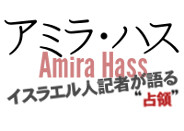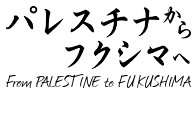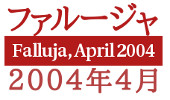- Palestine, Middle East
- Others
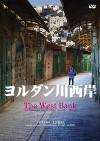
3Disk

The West Bank
a trilogy
2019
Audio: Arabic, English
Subtitles: English, Japanease
347min(3 Disk)
Stream and Download / Coming soon
The West Bank (a trilogy): Official Website (Japanease)
The foundation for establishing a "Palestinian State," which was supposed to be realized under the Oslo Accords of 1993, is eroding. Diminishing the hope that it will ever come to be is diminishing.
In Hebron, the largest city on the West Bank, the lives and livelihoods of Palestinian civilians have been threatened by intimidation and violence imposed upon them by the Jewish settlers who have settled in the city center.
The "C district", currently still "under Israeli occupation", comprises 60% of the west bank of the Jordan River. Unless this region is returned to the Palestinians, a "Palestinian State" cannot be realized. Meanwhile, the path towards the "Annexation of Israel" is steadily advancing, while the Palestinian residents are being robbed of their land and water sources. The regions that are in the most dangerous situation are the Jordan Valley and Southern Hebron.
- Chapter1. Hebron
(Part 1/Section 2) - In the center of Hebron, where two hundred thousand Palestinians reside, there are also about eight hundred Israeli settlers who have settled down and live there. A couple hundred Israeli military forces, together with police guards, are deployed to protect these settlers. The houses of Palestinians living in the city center are being systematically confiscated and purchased, one after the other, and being turned into a new part of the Israeli settlement. Here are the voices of the Palestinian people, fighting to protect their ancestor’s land and homes, while living in fear under the daily threat and violence of the Israeli settlers and the police force.
- Chapter2. The Jordan Valley
- 〈April, 2007〉
An in-resident documentation of the largest agricultural village in the Jordan Valley: A close look into the villagers everyday lives and the surrounding environment. Also, a portrayal of the Jewish settlers in the village and their "financial subordination" of the Palestinian residents who, "in order to live", are forced to work within the settlement. - 〈November, 2016〉
Israel aims for the "annexation" of the Jordan Valley as a key factor to their strategic plan. For this reason, they seize the Palestinian’s land and water sources, inhibit any developments to their essential infrastructure, and as a result drive the Palestinian residents into "indirect exile." This is a report, a testimony, of the reality of Israel’s plundering of land and water sources, of the effects of the Oslo Accords seen through the eyes of the victimized civilians, and what "land" means to Palestinians. - Chapter3. Southern Hebron
(Part 1・43min/ Part2・48min) - Fifteen Palestinian villages are now designated as "Military Restricted Areas." This has made it "illegal" for the villagers to live there. The Israeli military and police interfere with the development of infrastructure, they destroy their houses, and confiscate their land. Two Palestinian specialists explain how this is an "expulsion of residents", conducted by Israel in order to achieve the annexation of the "C district."
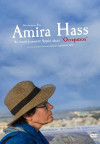
Amira Hass
An Israeli Journalist Speaks about "Occupation"
2019
Audio: Arabic, English
Subtitles: English, Japanease
237min
Stream and Download (English)
Amira Hass: Official Website (Japanease)
Amira Hass, a leading journalist covering the occupation of Palestine visited Japan in the fall of 2017, marking the 50th year of occupation. Amira is an Israeli who has lived in the occupied territories for more than 20 years, covering the occupation from both the Palestinian and Israeli sides. She is highly awarded and her journalism is respected both within and outside of Israel. She has, on the other hand, been labeled a traitor of her homeland and threatened by some of her fellow citizens, and her pull-no-punches critique has also resulted in being banished and threatened by the Palestinian Authority. During her stay in Japan, Amira Hass talks about the Israeli occupation, and through her coverage of Okinawa, makes incisive comparisons between Palestine and Okinawa. This is a four-hour documentary from her eight lectures in various parts of Japan and her trip to Okinawa.
Amira Hass was born in Israel in 1956. Her parents survived the Holocaust. As a correspondent for Haaretz, a leading paper, she was stationed in Gaza from 1993. From 1997, she moved to Ramallah in the West Bank and continues to report from this area.

From Palestine to Fukushima
2018
Audio: Arabic, English
Subtitles: English, Japanease
56min
Stream and Download (English)
From Palestine to Fukushima: Official Website (Japanease)
What does a Palestinian who was forced into exile by the establishment of the State of Israel and experienced the loss of home and family by bombing see in Fukushima, an area where residents have been exiled from their homeland by the nuclear power plant accident?
The recipient of the "Alternative Nobel Peace Prize", a Palestinian Human Rights Attorney, examines the commonalities of "Palestine" and "Fukushima" through a trip to Iitate Village and conversations with former residents of the village.
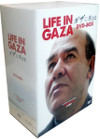
5Disk Box Set

Life in Gaza
2015/5Disk
Audio: Arabic, English
Subtitles: English, Japanease
Living in Gaza: Official Website
Israel’s blockade and bombardments have left Gaza in crisis. Residents' hopes, rallied by the 1993 Peace Accords (Oslo Accords) which conjured the dream of Gaza as the «Hong Kong of the Middle East,» have been shattered. How did the present situation in Gaza come about? The commentary of Raji Sourani, a human rights advocate working on behalf of Palestine, guides this visual history of Gaza, retracing events from the First Intifada in 1986 through the 2008-2009 bombings.
- Part 1: Raji Sourani’s Path(52min)
- Part 2: Two Intifadas(82min)
- Part 3: Rise of Hamas(67min)
- Part 4: Blockade(84min)
- Part 5: Assault on Gaza(86min)
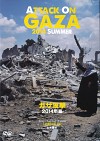
Attack on Gaza
Summer 2014
2015/124min
Audio: Arabic, English
Subtitles: English, Japanease
Attack on Gaza Summer 2014: Official Website
The large-scale attack unleashed by the Israeli military on July 8, 2014, and the ground invasion that followed it, resulted in the deaths of 2,150 people in Gaza. 1,400 of those people—around 70% of the total--were civilians. More than 20,000 homes were destroyed, and several hundreds of thousands of new refugees resulted from the crisis.
The damage, moreover, did not end there. The infrastructure of Gaza’s daily life and industries—including agriculture, factories, and electrical power plants—were destroyed, resulting in civilian life being completely paralyzed even after the attack had ended.
What was Israel’s aim? What impact did the attack have on the people of Gaza, who suffered extensive damage, and what were their feelings toward the ruling group Hamas?
These questions are addressed in this film, as seen through the eyes of a Japanese journalist who spent 30 days on the Gaza battlefield.
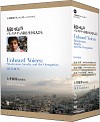
3Disk Box Set

Unheard Voices
Palestinians, Israelis, and the Occupation
2009/3Disk
Audio: Arabic, English
Subtitles: English, Japanease
Unheard Voices: Official Website
- Part 1: Gaza (125min)
- Part 2: Encroachment (121min)
- Part 3: Shalom, Salaam (126mi)
- Part 1: Gaza
- A family in the Jabalia refugee camp, the largest in the Gaza Strip, is followed over the course of 6 years to depict how and why the 1993 «Peace Accords» did not bring true peace to Palestinian residents.
- Part 2: Encroachment
- Homes are demolished and the residency rights of Palestinians in Jerusalem are usurped, while elsewhere the «separation wall» encroaches on land and resources, depriving Palestinians of the foundation for building an independent state.
- Part 3: Shalom, Salaam
- As Israelis and Palestinians initiate a dialogue, the gulf between their visions of peace is explored through the family of a young Palestinian terrorist, the parents of an Israeli girl killed in a suicide bombing, and a female soldier injured in an attack and her family.

Breaking the Silence
«Unheard Voices» Part4
2009/130min
Audio: Arabic, English
Subtitles: English, Japanease
Breaking the Silence: Official Website
In the spring of 2002, the Israeli army surrounded and attacked the Balata refugee camp. The camera follows residents living in a state of terror and records their lives and feelings. The desperate situation in the Jenin refugee camp after the death and destruction of Israel’s violent attack is also depicted, conveying the reality of «occupation.» Meanwhile, former Israeli officers and soldiers in a group called Breaking the Silence testify to the numbing of their sense of morality and ethics during service in the occupied territories, and the dread they feel over the loss of their humanity. They speak out from concern that the moral foundations of Israeli society and the state are at risk. The soldiers' testimony and the ambivalence of their families reveal the deep shadows that the occupation has cast on Israeli society.
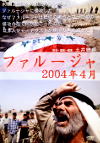
Falluja April 2004
2005年/55min
Audio: Arabic, English
Subtitles: English, Japanease
Falluja April 2004: Official Website
In April 2004, the U.S. forces invaded Falluja with several thousands of soldiers. About 730 people were killed, and 2,800 were injured in the siege and subsequent attacks by U.S. forces over the next month. Why did Falluja become a base of the resistance against the occupation? How did the U.S. forces attack? Who fought against them?
And what damages and injuries did people get?
10 days after the siege of Falluja was lifted, Toshikuni DOI, a Japanese independent journalist, went into Falluja and investigated the site. This documentary investigates the causes of, conditions during, and damages from the siege.
Footage was recorded in August 2003 (4 months after the invasion of Iraq) and in May 2004 (shortly after the siege of Falluja).
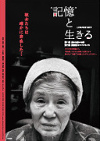
Living with "Memories"
2015/213min
Audio: Korean, Japanease
Subtitles: English, Japanease
Living with Memories: Official Website
- Chapter 1:
The House of Sharing (123min) While providing a straightforward depiction of everyday life at the House of Sharing, this chapter documents testimonies from halmoni who were «omfort women" under the former Japanese Army. They describe how they were taken as "comfort women,» their experiences in war zones, and their lives after returning home.
- Chapter 2:
Kang Deok-yeong (90min) Kang Deok-yeong, the youngest resident at the «House of Sharing," became known in and outside Korea as "the painting halmoni" who depicted her "comfort women» experiences through art. She died of lung cancer in January 1997. This is a documentary of her testimony, interspersed with her paintings. She describes her experiences of being forced to become a «comfort woman" after crossing to Japan as a member of the »women’s volunteer corps” and her life after returning to Korea. The documentary also shows scenes from the three years immediately prior to her death.
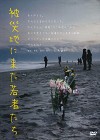
They Came as Volunteers
Youth in Disaster-Hit Areas
2014/60min
Audio: Japanease
Subtitle: -
They Came as Volunteers: Official Website
Immediately after the Great East Japan Earthquake in 2011, many young people rushed to volunteer in disaster-affected areas. Why did they go? What did they learn? How did they change?
This documentary creates a portrait of how the younger Japanese generation relates to society by following six young volunteers in the tsunami-devastated Arahama district in Sendai.
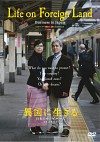
Life on Foreign Land
Burmese in Japan
2013/100min
Audio: English, Japanease
Subtitles: English, Japanease
Life on Foreign Land: Official Website
To escape the oppressive military regime in Burma (Myanmar), a young Burmese man named Kyaw Kyaw Soe fled to Japan in 1991, leaving his wife behind in his motherland. He spends his days working in a restaurant to make a living and continuing his pro-democracy activities that were banned in Burma. Later, his wife is able to join him in Japan, and the two of them run a Burmese restaurant. Thus begins their new life together in exile. Living in Japan for more than 20 years, Kyaw Kyaw Soe is caught between the wish to be with his family in his own country and the desire to see democracy in his homeland. In this foreign land, the future holds no guarantees, and it is not home.
This documentary covers 14 years of Kyaw Kyaw Soe’s life as a Burmese pro-democracy activist in Japan.
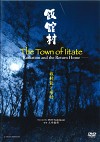
The Town of Iidate
Radiation and the Return Home
2013/119min
Audio: Japanease
Subtitles: English, Japanease
"The Town of Iidate" Radiation and the Return Home: Official Website
In March 2011, the world was stunned by the nuclear disaster in Fukushima. Today, the people of Iidate, a town outside the 30km radiation exclusion zone around the nuclear power plant, are still suffering. The direction of the wind, rain and snow caused radiation to reach dangerous levels and the entire town was forced to evacuate. This portrayal of people’s sentiments towards their families and lost hometown makes it clear that there are deep wounds yet to heal.
Young parents with small children are anxiously watching for signs of 2-3 months of radiation exposure. The government is spending billions on decontamination projects for reconstruction of Iidate, but radiation levels are still too high for children to live there and people are feeling torn. Is their wish to return home an impossible dream? Five years of life as evacuees, their heartache continues.
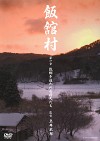
The Town of Iitate
No Longer Home
2012/60min
Audio: Japanease
Subtitle: English
"The Town of Iitate" No Longer Home: Official Website
In March, 2011, the Fukushima Nuclear Power Plant exploded, causing a large amount of radioactive effluent to leak. Iitate Village, designated by some as "one of the most beautiful villages in Japan," was more than thirty kilometers away. But because of the direction of the wind, snow, and rain, it was heavily effected by radiation. For this reason, a month after the nuclear disaster, the Japanese government ordered the municipality to evacuate entirely. As a result, approximately 6,000 residents were forced to leave their homes.
For the documentary film maker, Toshikuni Doi, who had been devoting his career to capturing the "Israeli/ Palestine Conflict," this man-made disaster inflicted upon the villagers of Iitate; the residents being forced off the land they were familiar with, livelihood being lost, families getting scattered, became the "Palestinians of Japan" in his eyes.
Doi followed the story of two dairy farmers of Iidate Village as they lost their home, capturing the sequence of events on film. In doing so, he pursued the question of "What is 'home' and 'land'? " "What is 'community' and 'family'?"
While depicting the discrepancy and friction between the village leader trying to maintain the "village," and the young mothers who were worried about the negative effects of radiation contamination on their children, Doi was searching for the answer to the question, "which must we humans preserve: The community or the health and life of the villagers?"
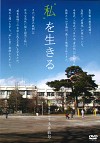
Live My Life
2010/138min
Audio: Japanease
Subtitle: -
Live My Life: Official Website
This film portrays three teachers with uncompromising principles, who stand up to protect freedom and democracy, fighting against increasing control and right-wing leanings at schools in Tokyo.
This is not a documentary theorizing problems in education or debating Japan’s national flag and anthem. This is a record of how a few teachers live their lives, fighting with dignity to be true to themselves as they resist a strong, opposing social trend.



